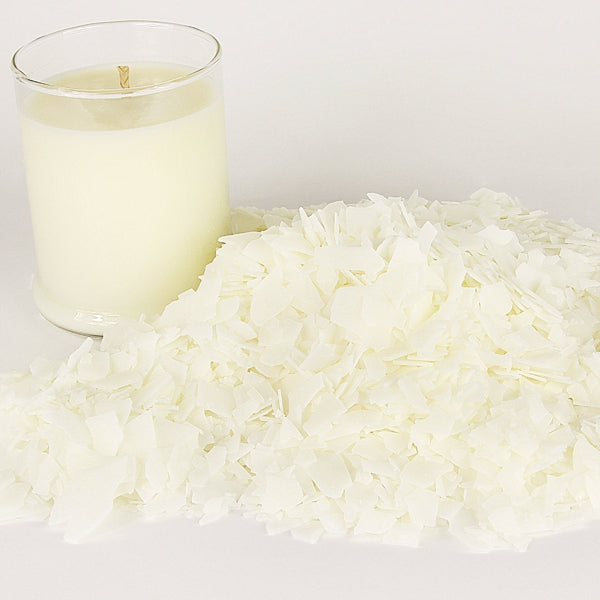Produce Setting with Handcrafted Soy Wax Candles and Home Fragrance
Produce Setting with Handcrafted Soy Wax Candles and Home Fragrance
Blog Article
From Wick to Wax: Comprehending the Chemistry Behind Soy Wax Candles and Their Ecological Influence
As we brighten our areas with the warm glow of candles, there exists a world of complex chemistry behind the apparently basic act of lighting a soy wax candle light. Join us as we unwind the scientific intricacies behind soy wax candles and explore their implications on our atmosphere.
Soy Wax Vs. Paraffin Wax
When comparing soy wax and paraffin wax for candle making, it is important to comprehend the distinctive features and advantages of each product. Soy wax is an all-natural, renewable resource acquired from soybean oil, making it eco-friendly and green - candles. On the other hand, paraffin wax is a byproduct of petroleum refining, which increases problems about its ecological impact and sustainability
Soy wax candle lights melt cleaner and discharge less soot compared to paraffin wax candle lights, making them a healthier selection for indoor air quality. In addition, soy wax has a reduced melting factor, enabling a longer-lasting candle light that distributes scent better. Paraffin wax, on the other hand, has a tendency to melt faster and much less easily, possibly releasing harmful chemicals into the air.
From a sustainability point of view, soy wax is favored for its biodegradability and eco-friendly sourcing, straightening with the growing customer choice for eco conscious items. While paraffin wax has been a traditional option in candle making because of its price and simplicity of use, the shift towards environmentally friendly options like soy wax is getting energy in the sector.
Chemical Composition of Soy Wax

Burning Refine in Soy Candles
The chemical composition of soy wax straight influences the combustion process in soy candles, influencing elements such as shed time, fragrance launch, and ecological influence. When a soy candle is lit, the warmth from the flame thaws the wax near the wick. This fluid wax is then drawn up the wick due to capillary activity. As the fluid wax gets to the fire, it vaporizes and goes through combustion. The burning process entails the vaporized hydrocarbons in the wax reacting with oxygen airborne to create warmth, light, water vapor, and carbon dioxide.
The combustion click here now effectiveness of soy candles is affected by the pureness of the soy wax and the top quality of the wick. In addition, soy wax candle lights have a lower environmental impact contrasted to paraffin candles due to their eco-friendly and renewable nature.

Ecological Benefits of Soy Wax

Thought about a lasting alternative to typical paraffin wax, soy wax uses remarkable environmental advantages that make it a prominent selection amongst eco-conscious consumers. One significant advantage of soy wax is its renewable sourcing. Soy wax is originated from soybean oil, which is predominantly cultivated in the United States. The cultivation of soybeans helps sustain regional farmers and lowers the reliance on non-renewable fossil fuels made use of in paraffin wax manufacturing. Additionally, soy wax is biodegradable, implying it breaks down naturally without launching damaging toxic substances into the environment. This characteristic makes soy wax candle lights a much more eco-friendly option compared to paraffin wax candle lights, which are made from look at these guys oil, a non-renewable source. Soy wax burns cleaner and generates less soot than paraffin wax, contributing to far better interior air high quality and reducing the need for cleansing and upkeep. Generally, the ecological advantages of soy wax align with the growing demand for green and lasting products in the market.
Recycling and Disposal Considerations
Recycling and proper disposal of soy wax candles play a vital function in maintaining ecological sustainability and lowering waste in households and communities. When it comes to reusing soy wax candle lights, the first action is to make sure that the candle has burned entirely.

In terms of disposal, if recycling is not a choice, soy wax candle lights are eco-friendly and can be securely taken care of in the majority of house waste systems. Nevertheless, it is always recommended to consult neighborhood recycling centers or waste monitoring solutions for certain standards on candle disposal to guarantee appropriate handling and ecological protection.
Final Thought
To conclude, the chemistry behind soy wax candle lights exposes their environmental benefits over paraffin wax candles. Soy wax, originated from soybean oil, burns cleaner and produces less residue when compared to paraffin wax. The combustion procedure in soy candle lights is much more efficient, leading to a much longer and much more even burn. In addition, soy wax is sustainable and biodegradable, making it a much more lasting choice for candle light production. Reusing and correct disposal of soy wax candles further add to their environmental impact. Read Full Report
When contrasting soy wax and paraffin wax for candle light production, it is important to understand the distinctive features and advantages of each material (home fragrance).Soy wax candle lights shed cleaner and discharge less soot contrasted to paraffin wax candles, making them a healthier selection for indoor air quality.Taken into consideration a lasting alternative to typical paraffin wax, soy wax offers remarkable ecological benefits that make it a preferred selection among eco-conscious customers. Soy wax burns cleaner and produces much less residue than paraffin wax, adding to far better indoor air high quality and reducing the demand for cleaning and maintenance.In final thought, the chemistry behind soy wax candle lights reveals their environmental advantages over paraffin wax candles
Report this page